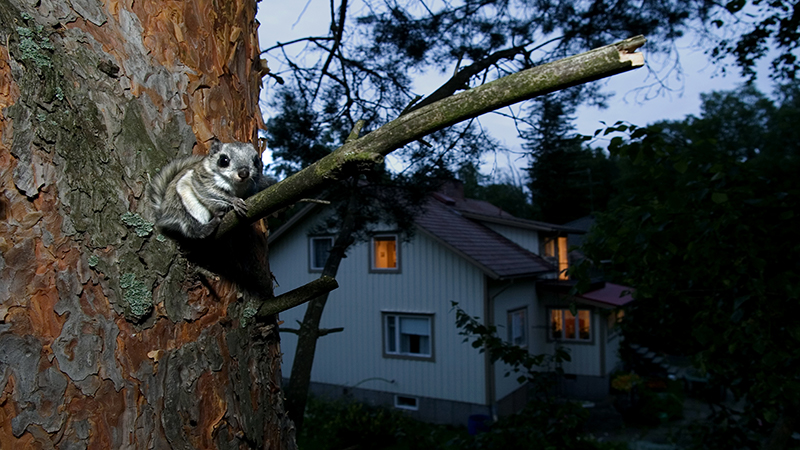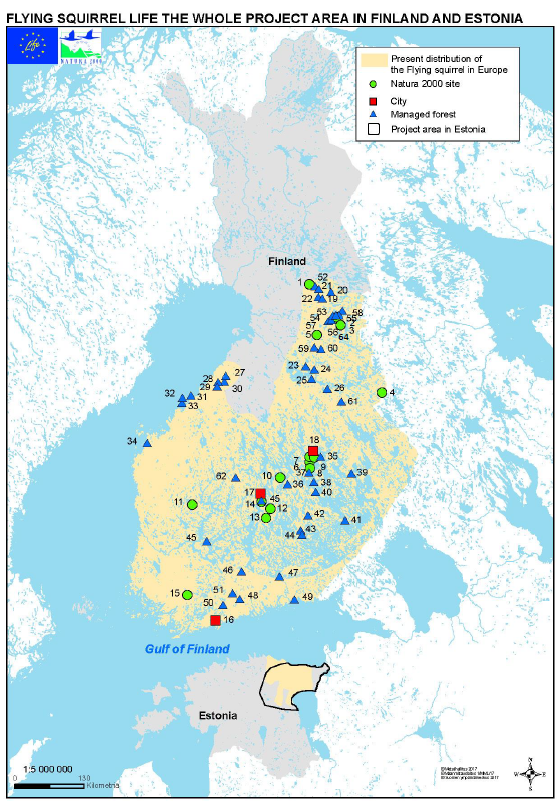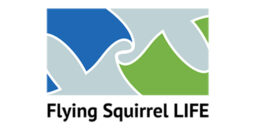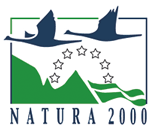Flying squirrel in urban areas and commercial forests

The main purpose of the LIFE project is to take concrete conservation measures to promote the conservation of flying squirrels. The measures consist of planning sites, implementing measures and monitoring impacts.
Urban areas
A total of 22 sites, four of which are Natura 2000 sites, are located in the cities of Espoo, Jyväskylä and Kuopio. We monitor the behaviour of radio-tagged flying squirrels in Espoo and plant young trees to combine isolated habitat forests with aspen saplings to ensure future stands for the flying squirrel. Read the Report on the study of radio-tagged flying squirrels in Espoo (pdf 8,4 Mt, in Finnish with an English summary); Summary of the report (pdf 374 kt, espoo.fi).
In cities of Espoo, Jyväskylä and Kuopio, flying squirrel monitoring was made also on built city plan areas. Summary of the report: Monitoring of flying squirrels on urban areas: Results and conclusions on flying squirrel monitoring in city plan areas in Espoo, Kuopio and Jyväskylä (pdf 5 Mt, metsa.fi).
We also place nest boxes in forests where there are currently no trees with cavities. In addition, we take measures that combine protection and recreational use in urban green areas so that both flying squirrels and people can enjoy them.
A Good Practice Guide in city planning (julkaisut.metsa.fi, in Finnish with an English summary) is published. Two surveys and flying squirrel inventories were conducted for the Good Practice Guide:
- Survey for municipalities and ELY centres on the flying squirrel conservation and land use (pdf 1,0 Mt, in Finnish)
- Survey on residents’ attitudes towards the flying squirrel in Kuopio (pdf 622 kt, in Finnish with an English summary)
- Summary of flying squirrel monitoring on urban areas (pdf 5 232 kt)
Commercial forests
The Finnish Forest Centre, Metsähallitus Forestry Ltd, Finnish Association for Nature Conservation, MTK, ELY Centre for Southwest Finland and Metsähallitus Parks & Wildlife Finland operate in these actions. Keskkonnaamet, Eesti Erametsaliit, Metsakorralduse Büroo and Riigimetsa Majandamise Keskus operate in Estonia.
The aim is to bring existing data and legislation into use so that the future of the flying squirrel can be secured. In the project, we create forest plans for flying squirrel sites that effectively take the species into consideration: the plans are evaluated jointly among partners, and assessed by the authorities of the regional ELY Centres. Only the best, most viable plans will be authorised for implementation. In the future, project sites will be used in forest management training that takes the flying squirrel into account.
- Approximately 40 sites are planned in Finland, of which 30 are on privately-owned land and 10 are on state-owned land.
- In Estonia, approximately 12 sites are planned to secure the habitat networks of flying squirrels.
In Finland, a joint planning approach is being used and developed. Joint planning means that the forest plans of project sites are assessed jointly with representatives of the project partners. Our partner company in joint planning process was Inclus Oy and the summary of the process can be red on their web pages (in Finnish; inclus.com).
A guide, field education events and webinars for the management of flying squirrel forests in commercial use have also being compiled. These and other project publications you will find from the page Flying Squirrel LIFE guides and other project publications.

Last updated 12 July 2024


